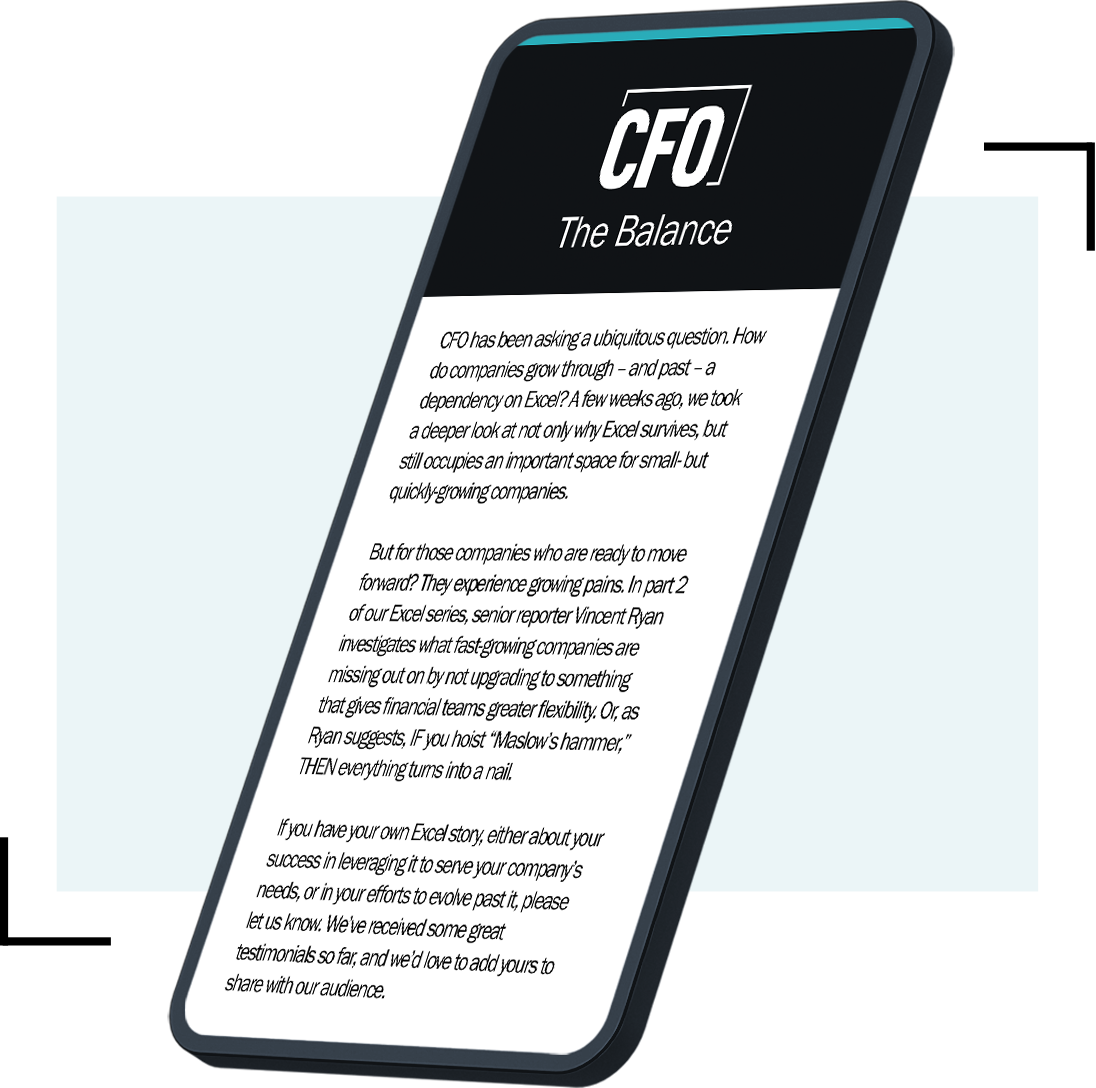The Latest
-
34% of CFOs ‘very optimistic’ about US economy: Report
Despite overall optimism, finance chiefs consider cost optimization a top focus area.
-
Customers Bancorp fires CFO for ‘cause,’ promotes insider to top spot
Following Carla Leibold’s immediate termination, the bank promoted Philip Watkins to the parent company’s top chief finance spot.
-
73% of accounting firms not using AI: Report
Despite its trendiness, 35% of accountants said their organizations are not using AI and have no plans to do so.
-
Opinion
The CFO-CMO partnership is the new dynamic duo
These measures help bridge the gap between marketing and finance.
-
Q1 corporate bankruptcies up 43% over last year
U.S. bankruptcy filings through March 31 increased year over year across all major filing categories.
-
NYCB hires new CFO, general counsel
The beleaguered Long Island-based lender brought aboard four executives Friday whose careers had crossed paths with that of newly minted CEO Joseph Otting.
-
NYSE President Lynn Martin talks IPOs; CFOs tackle cannabis accounting: Trial Balance
IPOs have raised 3.5 times the amount raised a year before.
-
68% of Gen Z workers would take an unwanted job for good pay: Report
Only 10% of Gen Z workers said they want more money so they can “splurge on things,” according to new data.
-
Chicago transit oversight board CFO: Strategy creation to execution
“We've been driving innovation in core areas like budgeting, financial reporting, and IT. This collaborative spirit positions us for continued success,” Kevin Bueso said.
-
CFOs on the move: Week ending April 12
New CFOs at KFC Global, Brightcove, Illumina, and more.
-
Q&A
Siemens Mobility NA’s CFO Bernd Blumenstein Drives Change for 176 Year-Old Company
As a regional CFO of a 176-year-old company, Blumenstein explains his part in the organization’s shift from a manufacturer to a technology provider.
-
The 6 a.m. CFO: How the Savannah Bananas’ Dr. Tim Naddy Starts His Day
Naddy shares how he structures his mornings, his favorite quote, and what his walk out song would be.
-
73% of CFOs to Earn Salary Between $201k-400k in 2024: Report
A new survey from Rho on CFO compensation figures reveals compensation, equity, and severance trends for finance chiefs.
-
PCAOB Hits KPMG Netherlands, Deloitte Affiliates With Exam Cheating Penalties
The civil penalties levied by the PCAOB reflect “egregious” widespread cheating on internal examinations required to maintain a CPA license.
-
Small Business Optimism Hits 11-Year Low: NFIB Report
Small business optimism dips as inflation concerns remain.
-
Opinion
The Post-IPO Checklist: 7 Insights for CFOs
The more CFOs know about life after going public, the better.
-

 "Royal Bank of Canada's global headquarters at 200 Bay Street in Toronto, Canada" by Francisco Diez is licensed under CC BY 2.0
"Royal Bank of Canada's global headquarters at 200 Bay Street in Toronto, Canada" by Francisco Diez is licensed under CC BY 2.0
Royal Bank of Canada Fires CFO Over Undisclosed Personal Relationship
The internal investigation that ousted Nadine Ahn may result in forfeiture of significant compensation due to misconduct.
-
45% of Execs Say Economic Conditions Better Than 6 Months Ago: Report
Forty-five percent of executives said global economic conditions were better than they had been six months earlier.
-
Jamie Dimon’s Annual Shareholder Letter, CFO Compensation Data, and More: Trial Balance
JPMorgan Chase CEO Jamie Dimon said artificial intelligence is one of the most potentially transformative inventions of the past several hundred years.
-
Autodesk to Audit Financial Practices, Delay Annual Report
The construction technology giant said it doesn’t believe the investigated areas will affect any previously issued financial statements or its most recent earnings release.
-
CFOs On the Move: Week Ending April 5
New CFOs at Spotify, Heathrow Airport, Farmers Insurance, Jacobs Solutions, World Insurance Associates, and more.
-
Modern FP&A Leadership: Strong Data, Communication, and Empathy
"Data from operations, supply chains, sales, marketing, all this data needs to be matched up together. If you have data silos, you won't be able to understand all that you can from your data," saud Wouter Born, founder of Born Capital.
-
Q&A
From Investment Banker to First-Time CFO: Moloco’s Brandon Maultasch
“There's always a balancing act of scrappy and scalable in each of the capabilities we’re building on the finance team.”
-
Former Indiana Schools CFO Charged With Corruption, Theft
Scott Bumgardner faces 21 felony charges for corrupt business influence and theft, as the school system looks to recover the missing funds while shoring up its financial controls.
-
Finance Team Collaboration Drives Lower Process Costs: Metric of the Month
Getting people to work together more effectively will help drive costs down sustainably.


























